Physical Address
304 North Cardinal St.
Dorchester Center, MA 02124
Physical Address
304 North Cardinal St.
Dorchester Center, MA 02124
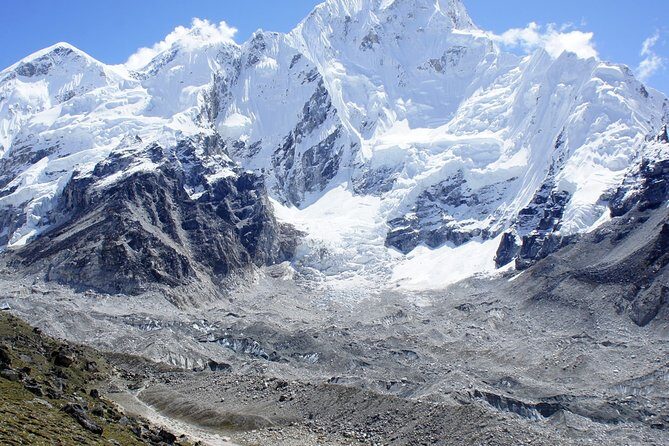
Discover Nepal’s stunning Himalayas on the Khopra Ridge Community Trek. Enjoy remote trails, sacred lakes, and authentic culture over 13 days of adventure.
Exploring the Khopra Ridge Community — 13 Days of Himalayan Beauty and Cultural Riches
Nepal’s trekking options are almost endless, but the Khopra Ridge Community Trek offers a unique blend of breathtaking mountain views, peaceful rural life, and cultural insights. This 13-day journey takes you away from the bustling Annapurna circuit to more remote trails, giving you a quieter, more authentic experience of Nepal’s Himalayas. From the lively streets of Kathmandu to the serene slopes near Kaire Lake, this trek promises spectacular scenery and meaningful encounters.
One thing we really appreciate about this tour is its focus on community and eco-friendly travel. Staying at local teahouses and passing through villages that support the Annapurna Conservation Area Project means you’re supporting local livelihoods while enjoying the stunning landscape. Also, the hike offers incredible views of Dhaulagiri, Annapurna South, Nilgiri, and Fang, which are often less crowded than the main Annapurna route.
A potential consideration is that the trek involves some long walking days and altitude changes, so it’s best suited for those with moderate fitness levels. Plus, since part of the trek ventures into less traveled areas, it offers fewer amenities than the busier routes, but that’s part of its charm. This tour is ideal for travelers seeking a mix of scenic grandeur, culture, and peaceful solitude away from the crowds.
If you’re craving an adventure that combines mountain vistas with local heritage and authentic Nepalese life, this trek could be a perfect match. It’s especially suited for those willing to trek in slightly remote areas, enjoy vibrant landscapes, and experience Nepal’s spiritual and natural beauty firsthand.
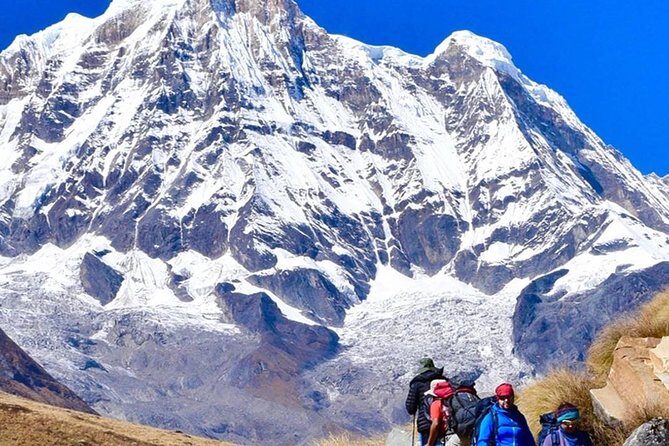
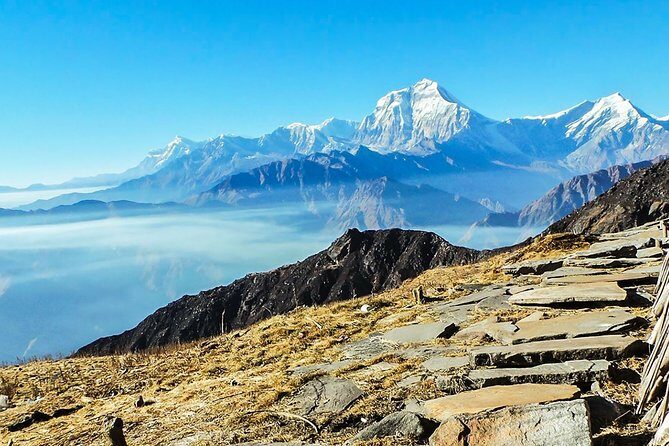
Looking for more options in Kathmandu? Here are some other experiences worth considering.
The adventure begins with a warm welcome at Tribhuvan International Airport, where a representative from Alpine Club of Himalaya greets you. Staying in a comfortable 3-star hotel in Kathmandu, you’ll have time to settle in, check your gear, and explore the bustling Thamel district. The first night’s welcome dinner is a flavorful introduction to Nepalese cuisine, setting a friendly tone and giving you a chance to meet fellow travelers.
Kathmandu’s UNESCO-listed sites — Durbar Square, Pashupatinath Temple, Swayambhunath (Monkey Temple), and Bouddhanath — are included in your pre-trek itinerary. These sites offer a glimpse into Nepal’s spiritual essence and architectural grandeur, enriching your trip with cultural context before heading into the mountains.
The second day involves a guided tour of Kathmandu’s most significant UNESCO sites, giving you a solid grounding in Nepalese culture and history. This also includes a briefing and equipment check with your trek leader, which ensures you’re prepared for the upcoming remote trail. It’s a practical step, especially since you’ll be staying in basic but comfortable community lodges later.
A scenic morning flight to Pokhara offers panoramic views of Dhaulagiri, Manaslu, and Machhapuchhre (Fishtail). In Pokhara, the city’s lakeside setting is enchanting and offers a brief respite before hitting the trail. From Syauli Bazaar, you’ll begin your trek, with the first major stop being Ghandruk — a lively Gurkha village famous for its military recruitment and conservation efforts.
In Ghandruk, the panoramic vistas of Machhapuchhre, Annapurna South, and Hiunchuli are striking. We loved how the trek guides share insights about the village’s role in Nepal’s military recruitment and ecological initiatives. Staying in Ghandruk offers a mix of community life and mountain scenery, with the chance to interact with local residents.
Leaving the main trail behind at Tadapani, you head into quieter territory. Walking through flourishing rhododendron forests, you’ll see the vibrant red blooms, especially if visiting in spring. The forests are lush, fragrant, and alive with birdcalls. Trekking here is relatively gentle but rewarding, with views of Machhapuchhre, Annapurna, and Hiunchuli – iconic peaks that define the region.
The overnight in Tadapani is a highlight, offering fantastic mountain views and a peaceful ambiance. Reviews highlight that many enjoy the chance to disconnect from the busy trails and enjoy the tranquility of this less-trodden path.
Progressing further into the wilderness, the trek becomes more diverse. The route takes you through alpine meadows, pastures, and temporary herders’ settlements. Our favorite part was reaching Dobato, where the view of Annapurna South is commanding. As one reviewer noted, “The landscape here feels like a secret, quiet corner of the Himalayas, far from the crowds.”
From Dobato, the trek continues into Chistibung, a traditional herders’ settlement. If luck is with you, spotting the Lophophorus (Danphe), Nepal’s national bird, or Himalayan Thar adds an exciting touch. The area’s flora and fauna — including colorful pheasants and mountain goats — make every step interesting.
The ascent above the tree line to Khopra Ridge is a steady, rewarding climb. The views at Khopra are among the best in the region, with Mount Dhaulagiri, Nilgiri, and Annapurna South providing a dramatic mountain backdrop. The short walk along Khopra Ridge to a viewpoint overlooking the Kali Gandaki River offers a perfect photo-op and a sense of achievement.
One of the trip’s spiritual highlights is the early morning walk to Kaire Lake. The lake is revered by both Hindus and Buddhists, believed to grant Nirvana. The walk is manageable for most, and the views of Fang and surrounding peaks make it worthwhile. Shrines on the lakeside add a sense of serenity and cultural depth. Multiple reviews mention how this lake feels almost mystical and peaceful, a true highlight of the trip.
You’ll descend from Khopra Ridge into villages like Swanta and Chittre, passing terraced fields and traditional homes. The walk offers more mountain views, especially Dhaulagiri, with plenty of opportunities for photos and conversations with locals. Crossing suspension bridges and seeing watermills along the way adds authentic rural charm.
After reaching Ghorepani, you descend to Ulleri, a popular stopping point. The last days of trekking are scenic but relatively gentle, leading to the bustling lakeside city of Pokhara.
Back in Pokhara, the tour includes visits to the Shanti Stupa for sunrise views, Davis Falls, Shiva Cave, and the International Mountain Museum. Boating on Phewa Lake and relaxing at lakeside cafes are perfect ways to unwind after days of trekking. The city’s mountain views, especially at dawn, truly are spectacular and provide a fitting end to your adventure.
The trip concludes with a transfer to Kathmandu, giving you a few hours to reflect on your journey. The tour includes a farewell dinner, allowing you to share stories and enjoy Nepalese hospitality one last time.

The $1,399 price tag covers a lot: international flights between Kathmandu and Pokhara, accommodations, all meals during the trek, permits, local guides, porters, and airport transfers. For the quality of scenery, cultural encounters, and the remote trail experience, this represents solid value. The included guides are knowledgeable, often sharing insights into local customs and mountain history, which enriches the trek beyond just the scenery.
While there are no formal reviews available, the detailed itinerary and descriptions suggest that travelers find the experience worthwhile. The emphasis on community lodges and eco-conscious travel appeals to those interested in sustainable tourism. The variety of landscapes and peaceful routes receive praise for offering a meaningful Himalayan adventure without the crowds.
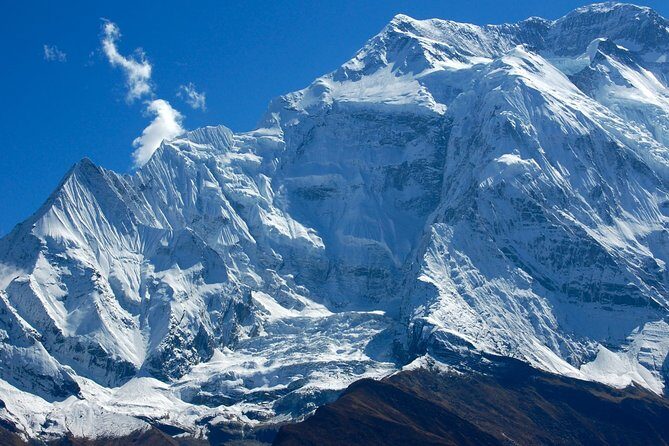
This trek is perfect for those who want spectacular mountain views without the hustle of the more popular Annapurna circuit. It suits travelers with moderate fitness levels who enjoy culture and nature. Those interested in photography, spirituality, or supporting local communities will find this tour fulfilling.
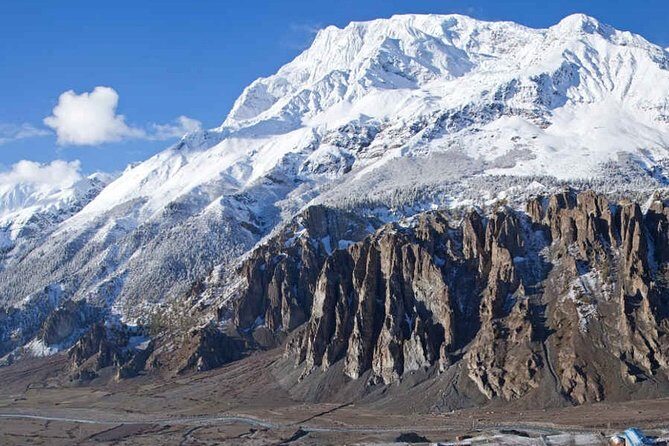
The trek involves some days with long walks and altitude changes, so a reasonable level of fitness is recommended. The accommodations are mainly community teahouses, which are comfortable but basic — so it’s best to keep expectations realistic. The tour’s inclusion of domestic flights is a major convenience, saving time and energy compared to overland routes.
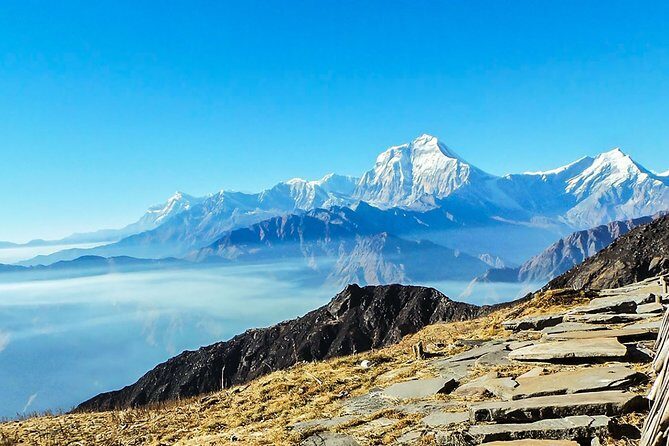
The Khopra Ridge Community Trek offers a balanced mix of remote wilderness, cultural richness, and breathtaking vistas. It’s a worthwhile option for travelers seeking a quieter, more authentic mountain experience in Nepal. With supportive guides, cozy local lodges, and awe-inspiring views, this journey promises to be both memorable and meaningful.
Ideal for those who want to escape the busier trails, experience Nepal’s vibrant community life, and enjoy the tranquility of lesser-trodden paths. While it demands a bit of physical effort, the payoff is a deeper connection to the mountains and local culture — making it a truly rewarding adventure.

How many days does the trek last?
It lasts approximately 13 days, including travel, sightseeing, and the trek itself.
Are domestic flights included?
Yes, the tour includes flights between Kathmandu and Pokhara.
What type of accommodations are used?
You’ll stay in a 3-star hotel in Kathmandu and Pokhara, with community lodges and local teahouses during the trek.
Is this trek suitable for beginners?
It’s best for those with moderate physical fitness, as it involves some long walking days and elevation changes.
What food is included?
All meals during the trek (Breakfast, Lunch, Dinner) are included, along with breakfast in Kathmandu and Pokhara.
Are permits included?
Yes, all necessary permits (ACAP, TIMS) are covered.
Can I customize this experience?
Since it’s a private tour, there’s flexibility to discuss specific interests with your guides.
What should I pack?
Layered clothing, sturdy trekking shoes, personal essentials, and a sense of adventure are recommended.
Is this tour eco-friendly?
Yes, it supports local communities and eco-friendly practices through stays in community lodges.
What’s the best time of year to do this trek?
While not explicitly stated, Nepal’s trekking seasons are typically spring (March-May) and autumn (September-November) for optimal weather.
By choosing this trek, you’re signing up for more than just mountain views — it’s an opportunity to connect with Nepal’s vibrant culture, support local communities, and experience the Himalayas in a peaceful, less crowded setting.